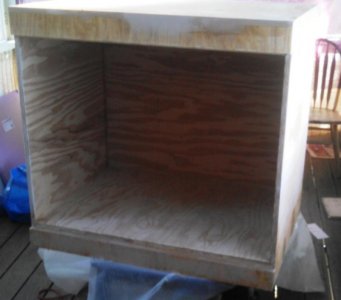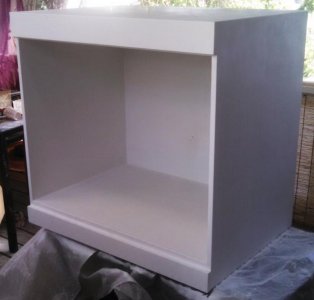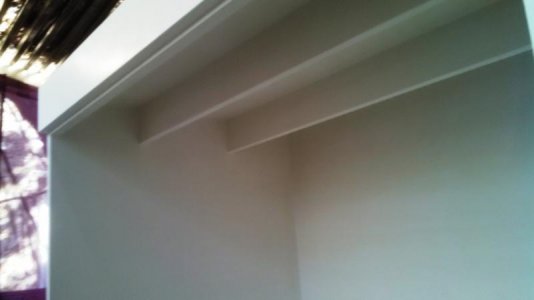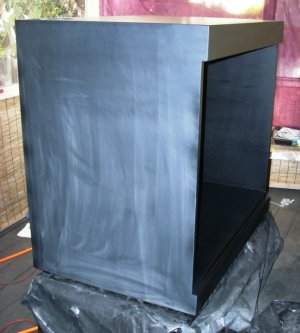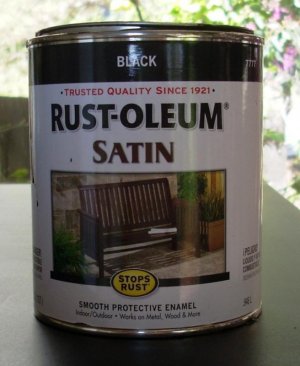ThRoewer
New member
I've build my tank stand out of marine plywood. And the idea is to give it a black lacquer finish and add a final coat with a urethane floor sealer.
As surface treatment I started with sculpt wood to fill all screw holes and imperfections in the wood.

Next I added several coats of white primer (Zinsser 123). First layers rolled on and a last applied with spray cans:


This was almost a perfect finish, just the wrong color.
Next I tried flat black with spray cans. The idea was to add the gloss with a clear coat at the end. The cans gave a good enough cover but didn't
Spraying on the flat black worked OK, but it was so sensitive to touch that you couldn't handle it without messing up the uniformity of the finish. Also the spray can finish wasn't too uniform to begin with.
So I decided to try satin, applied with a spray gun.

Whatever I tried I always get an uneven paint coat. Either the paint was too thin and didn't cover enough or too thick and left stripes. And whenever I got an acceptable coat a fly decided to land on it and ruin it :headwalls:
After about 10 coats that all didn't come out good enough I decided to give rolling a try and it actually worked perfectly on all areas that are narrower than the roller. But on the large surfaces I got these god-awful stripes.
This is the current state after sanding the last layer even:

I'm at my wits end and need some input how to get this done right quickly.
As surface treatment I started with sculpt wood to fill all screw holes and imperfections in the wood.
Next I added several coats of white primer (Zinsser 123). First layers rolled on and a last applied with spray cans:
This was almost a perfect finish, just the wrong color.
Next I tried flat black with spray cans. The idea was to add the gloss with a clear coat at the end. The cans gave a good enough cover but didn't
Spraying on the flat black worked OK, but it was so sensitive to touch that you couldn't handle it without messing up the uniformity of the finish. Also the spray can finish wasn't too uniform to begin with.
So I decided to try satin, applied with a spray gun.
Whatever I tried I always get an uneven paint coat. Either the paint was too thin and didn't cover enough or too thick and left stripes. And whenever I got an acceptable coat a fly decided to land on it and ruin it :headwalls:
After about 10 coats that all didn't come out good enough I decided to give rolling a try and it actually worked perfectly on all areas that are narrower than the roller. But on the large surfaces I got these god-awful stripes.
This is the current state after sanding the last layer even:
I'm at my wits end and need some input how to get this done right quickly.

